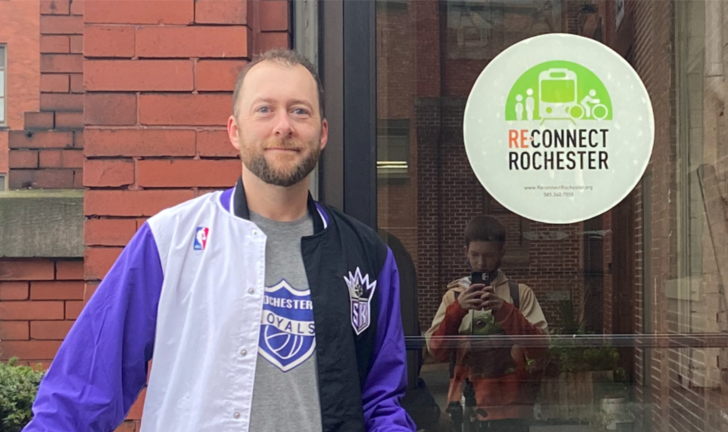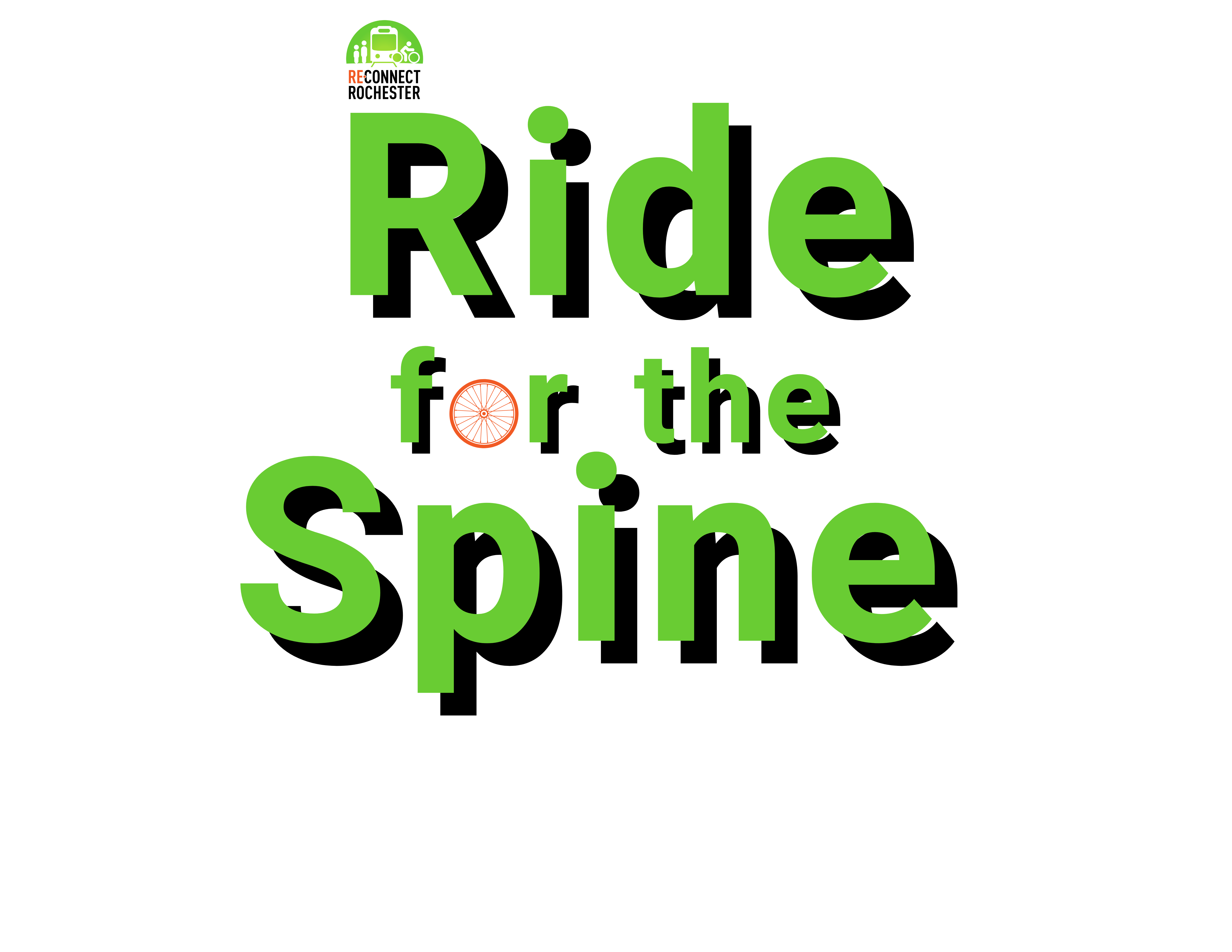By Jesse Peers, Cycling Manager at Reconnect Rochester
Many people in the mobility world are probably familiar with Janette Sadik-Khan, Transportation Commissioner in New York City from 2007-2013. She’s credited in many ways with starting the 21st Century bike boom in the US, which she chronicles in her stellar book Street Fight. Last summer, when I heard she was featured on the Possible podcast to talk about the future of cities, I gave the episode a listen while riding my bike, scoping out a potential route for our ride series. The episode was great and you can listen to it here.
Towards the end of the podcast episode, Sadik-Khan was asked if there was a book that filled her with optimism for the future. She immediately answered and recommended Kim Stanley Robinson’s The Ministry for the Future, her favorite book. The novel sounded so intriguing that I purchased a copy and read it last summer. It’s one of the most inspiring books I’ve ever read, and though I wished it emphasized transportation, proximity and land use more, many aspects of it will keep me thinking for a long time.
The premise of the book is that things get so bad climate-wise that the United Nations creates a new subsidiary body with permanent duties to push things forward. The so-called Ministry for the Future’s job is to advocate for the world’s future generations, to defend all living creatures present and future who cannot speak for themselves. Over the course of the book, humanity gets its act together with a broad swath of sustainable initiatives.
A concept that really intrigued me was that of the Half Earth Project and habitat corridors from Chapter 72. To protect critically endangered wild animals, habitat corridors such as Y2Y (Yukon to Yellowstone) are established. When wildlife is cooped up in isolated pockets, it can’t thrive. In the book, nations establish habitat corridors, long unbroken spines for wildlife, that serve as safety zones. Animals get free passage up and down those spines, roads are given under- and over-passes to not inhibit animal movement, wildlife are protected from hunting, and disparate animal populations get a chance to connect, breed and thrive.
While I was reading this book, the City of Rochester’s Active Transportation Plan was being finalized and it struck me how similar habitat corridors are to the envisioned Bike Spine Network. Obviously, Rochester’s bike network now is disparate and piecemeal, hence it can be argued that we really don’t have a bike network yet (would disconnected train tracks all over the country be considered a national rail network?).
The idea of the Bike Spine Network is to concentrate political will, to focus investments, on a few seamless, high-comfort bike routes across the city, hopefully in the near term. I see the Bike Spine Network as Rochester’s “habitat corridor” for bike riders of all ages and abilities: safety zones allowing free passage, along which we can thrive and multiply.
Envisioned Bike Spine Network in dark blue; already completed segments such as the Genesee Riverway Trail and East Main cycletrack are shown as dashed lines
To Rochester’s credit, especially recently, the City often wants to do the right thing: reallocate street space to create dedicated bicycle facilities. But as many advocates know, some people get really mad when space for cars, for on-street parking in particular, is taken away for bike lanes. The opposition can be quite vocal and sometimes the City steps back from safer designs (remember Lake Ave?).
It’s time for bike riders (and people who would bike if they felt protected and comfortable) to be vocal.
Save The Date!
Please join us on Friday afternoon, May 3, 2024 for Reconnect Rochester’s Ride for the Spine. More info here along with an RSVP form to help us get a headcount.
We want as many people as possible to ride to City Hall together that afternoon and surround the city with support and positive energy for the Bike Spine Network. If you have kids (or nephews, nieces and/or grandchildren), consider taking them out of school early so they can join in the fun. When we get to City Hall’s steps, we want the Mayor, County Executive, Commissioner and Councilmembers to look out upon a sea of diverse people (people of color, kids, women, seniors) supporting these changes. Together, we’ll give City Hall political capital to work towards these improvements in a timely manner. We hope to see you on May 3rd!



